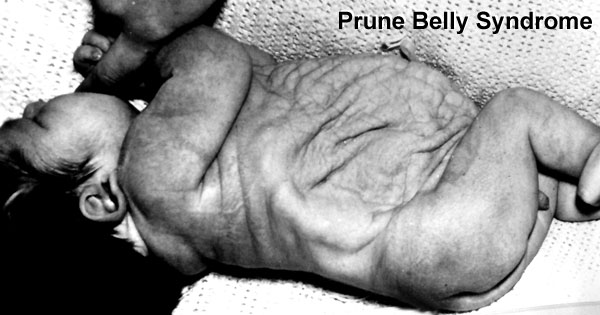Prune- belly syndrome
Q1.Prune- belly syndrome is characterized by all except
a.bilateral hydronephrosis and hydroureter
b.distended bladder
c.undescended testes
d.normal anterior abdominal wall
ANS--d===normal anterior abdominal wall
- ThePrune- belly syndrome (PBS) is generally readily apparent clinically and consists of absent abdominal wall muscles, undescended testes, and renal dysplasia associated with gross dilatation of the collecting systems.
- All affected children have a universal mesentery with a mobile bowel.
- Plain abdominal radiographs show a protuberant abdomen resulting from the lack of abdominal musculature. In the most severely affected patients, there may be urethral obstruction with severe renal dysplasia, while less severely affected individuals demonstrate an array of urinary tract abnormalities.
- The characteristic features are small kidneys with abnormal minimally dilated calyces and upper ureters, while the lower ureters are tortuous and show disproportionate dilatation.
- The bladder is thin walled, of large capacity without trabeculation, and has a wide neck.
- A patent urachus or a urachal diverticulum may be present.
- The posterior urethra is dilated proximally with a typical conical narrowing and a poor stream in the distal urethra .
- Occasionally, generalized or focal anterior urethral dilatation is present. Prognosis depends on the degree of renal dysplasia.
 | |

REF
No comments:
Post a Comment